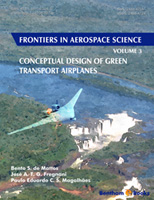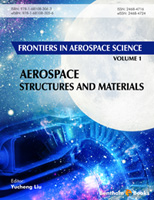Shock boundary layer interaction (SBLI) control is a very important topic in aerospace science and engineering. SBLI could cost flow separation, pressure fluctuation, noise generation, engine stop, energy efficiency reduction, and even structure destruction. As a passive SBLI control tool, micro-ramp vortex generator (MVG) is a robust and efficient device and received wide attention by scientific researchers and engineers. This book mainly introduces high order large eddy simulation (LES) for SBLI control by MVG. Since Li and Liu published their milestone LES work in 2010, which shows that the vortex structure around MVG is not simply a pair of streamwise vortices, but consists of a train of spanwise vortex rings, the vortex structure around MVG becomes a hot topic for scientific research and more and more research papers have been published since then. However, we have no intention to include all LES work about MVG in this book, but are focused on the LES work which was conducted by the research team at Center for Numerical Simulation and Modeling (CNSM) of University of Texas at Arlington (UTA) under support of US Airforce Office of Scientific Research, Grant No. FA9550-08-1-0201.
In this book, an implicitly implemented large eddy simulation (ILES) by using the fifth order bandwidth-optimized WENO scheme is applied to make comprehensive studies on ramp flows with and without control at Mach 2.5 and Req=5760. The work is mainly contributed by Dr. Chaoqun Liu and Fellows in Center of Numerical Simulation and Modeling at University of Texas at Arlington. Flow control in the form of microramp vortex generators (MVG) is applied. The results show that MVG can distinctly reduce the separation zone at the ramp corner and lower the boundary layer shape factor under the condition of the computation. A series of new findings are obtained about the MVG-ramp flow including the structures of the surface pressure, the three-dimensional structures of the re-compression shock waves, the complete surface separation pattern and the new secondary vortex system, etc. The mechanism about the formation of the momentum deficit is deeply studied. A new mechanism on the shock-boundary layer interaction control by MVG is discovered as associated with a series of vortex rings, which are generated by the high shear layer at the boundary of the momentum deficit zone. Vortex rings strongly interact with the flow and play an important role in the separation zone reduction. In addition, the governing equation, boundary condition, high quality grid generation, high order shock capturing scheme, DNS inflow condition are all introduced in details. These will provide a powerful tool for researchers to use LES to study shock boundary layer interaction and supersonic flow control including shock induced separations and noise reduction. This book is organized as follows: In chapter1, an introduction of shock-boundary layer interaction (SBLI) is given. A paper review about the driven mechanism of pressure fluctuation caused by shock induced flow separation on a ramp corner is presented and a research history on micro vortex generator (MVG) is briefly reviewed. In particularly, a series of new findings made by the LES team at Center of Numerical Simulation and Modeling led by Dr. Chaoqun Liu under the support of US Air Force Office of Scientific Research (AFOSR) are briefly reported. These new findings are milestone work which have made breakthrough in understanding the physics of SBLI, shock-vortex ring interaction and control of shock induced flow separation and noise generation. In Chapter 2, the dimensional and non-dimensional 3-D time-dependent Navier-Stokes equations in curvilinear coordinates are given in details. The flux splitting scheme and non-reflecting boundary conditions are discussed and provided. In Chapter 3, a brief introduction of algebraic grid generation, transfinite interpolation and elliptic grid generation is given. In particular, a two-step elliptic grid generation method developed by Spekreuse (1995) is introduced, which can generate high quality and orthogonal grids near the boundary. The smooth and orthogonal grid for the LES case of MVG and Ramp is generated by the above method. In Chapter 4, a series of high order shock capturing schemes including WENO scheme, weighted compact scheme, modified upwinding compact scheme are introduced, which can get sharp shock capturing but keep high order accuracy in the smooth area. These schemes are particularly useful for LES of shock-turbulence interaction where both high resolution and sharp shock capturing are important. All these schemes are some kind successful in high order LES for SBLI. An efficient shock detector is introduced as a part of weighted compact and modified upwinding schemes. In addition, the accuracy, truncation errors, dissipation and dispersion of these schemes are analyzed. In Chapter 5, a high order direct numerical simulation (DNS) is applied to generate fully developed turbulent inflow. The fully developed inflow was taken from a case of DNS for flow transition. The inflow condition is carefully checked with the velocity profile and ratio of boundary layer thickness and made sure it is a fully developed turbulent flow in order to compare with the wind tunnel test. In Chapter 6, a series of new findings by UTA’s high order LES is presented including spiral points near the leading edge, momentum deficit origin, a train of spanwise vortex rings, flow separation topology is given and the physics of the observation is discussed and concluded. In Chapter 7, interaction of shock and vortex rings which were generated by MVG is described and analyzed in details. The change of vorticity, vortex, shock strength and location is described in details. The physics of shock and vortex interaction and its influence on the flow structure is also discussed. In Chapter 8, a new mechanism of SBLI control by MVG is presented. Traditionally people believe the reduction of shock-induced separation is caused by streamwise vortex which mixes the boundary layer flow and make the velocity profile be more capable to resist the flow separation. The new mechanism shows the spanwise vortex rings are critical which are quickly moving and fast rotating to destroy or weaken the shock and significantly reduce the shock-induced flow separation. Potentially, this study could lead to some technology revolution in control of SBLI, flow separation and noise reduction. In Chapter 9, the correlation between density and pressure fluctuation and vortex motion is studied. The correlation between flow separation and vortex motion is studied as well. The correlation clearly shows the vortex ring generation, size, frequencies, and strength are closely related to the fluctuation of density and pressure. This would provide a powerful tool for SBLI control and noise reduction. In Chapter 10, the results are validated against the TU Delft experiment on the same MVG geometry and Mach number. Several techniques are used to analyze the coherent structures in the MVG wake. The vortex system in the MVG wake is visualized using vortex identification method and it is found that two primary counter rotating streamwise vortex pair are induced by the MVG, which would further lead to a train of vortex rings through K-H instability. The average distance between adjacent vortex rings is determined by a spatial auto-correlation of vorticity, which is estimated as 1.5 MVG height. Two dimensionality reduction algorithms, namely Proper Orthogonal Decomposition (POD), and Dynamic Mode Decomposition (DMD) are applied to a set of flow field sequences on the spanwise symmetry plane. POD modes identifies structures contain most of the turbulent kinetic energy and DMD modes capture single frequency structures most essential to the unsteady dynamics.
The book is mainly written by Dr. Chaoqun Liu, the Director of CNSM Center at UTA and co-authored by former CNSM research fellows including Dr. Qin Li, Dr. Yonghua Yan, Dr. Yong Yang, Dr. Guang Yang and Ms. Xiangrui Dong. The authors would like to thank Dr. Frank Lu, Dr. Yinling Dong, Dr. Maria Oliveira and Dr. Hua Shan for their assistances.
ACKNOWLEDGEMENTS
This work was supported by AFOSR grant FA9550-08-1-0201 supervised by Dr. John Schmisseur. The authors are grateful to Texas Advantage Computing Center (TACC) for providing computation hours.
CONFLICT OF INTEREST
The author declares no conflict of interest, financial or otherwise.
Chaoqun Liu
Center for Numerical Simulation and Modeling,
Department of Mathematics,
University of Texas at Arlington,
Arlington, Texas 76019, TX,
USA
E-mail: cliu@uta.edu




